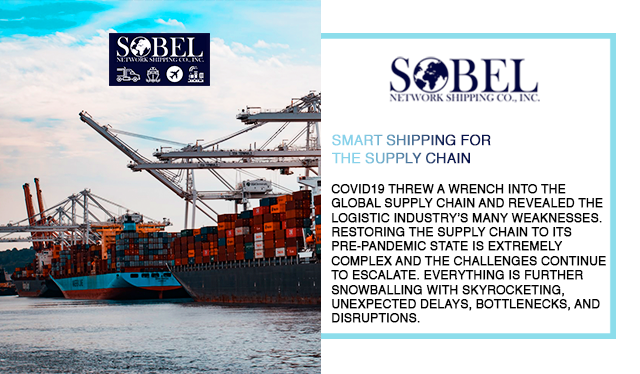Covid19 threw a wrench into the global supply chain and revealed the logistic industry’s many weaknesses. Restoring the supply chain to its pre-pandemic state is extremely complex and the challenges continue to escalate. Everything is further snowballing with skyrocketing, unexpected delays, bottlenecks, and disruptions.
Impacts on the Supply Chain
One of the biggest impacts on global trade was the Suez Canal blockage that occurred in March of 2021. A large ship become stuck in one of the busiest trade routes. The incident caused a significant economic loss for exporters and a backlog occurs which hit the world trade hard for months.
The occurrence became an immediate media sensation, but many minor incidents that also cause chaos in the supply chain and serious financial losses for shippers and exporters go unreported. In every case, the losses could have been avoided with real-time tracking and initiative-taking preparation.
A Maritime Executive recently stated in an interview, “Four out of every ten containers (40%) missed their scheduled sailing, while some significant carriers and ports reported rollover rates over 50%, the global shipping line schedule reliability has dropped to 34.9% in January 2021” Clearly, in an effort to strengthen the supply chain, systems need to improve their visibility of cargo and its movements along the supply chain in real-time.
Cutting Edge Tech for Logistics Companies
Logistics companies are now turning to innovative technologies to meet the growing needs of businesses.
The shipping and logistics industry is finally waking up to innovative technologies. Containers transport more than 95% of all manufactured goods at some point during their shipment life cycle. While many economies and traders have evolved, the majority of the ecosystem relies on conventional practices that are inept in offering real-time intelligence or exact location, thereby contributing to further chaos.
Smart Shipping
Smart shipping is a modern shipping method that relies on intelligent technologies and data analytics to make shipment decisions. The hyper-automation helps streamline smart container tracking using technologies such as IoT.
The cargo tracker works by capturing data points such as shipment departure, arrival time, and any ports visited. Also, the system compares real-time status updates and compares it to the initially planned schedule. It then displays any updates or possible delays. The data goes across many data points from the start to the completion of the shipping journey. Container satellite tracking provides effective real-time data.
Covid19 brought the shipping industry to its knees. Container shortage further caused problems. Supply chain owners started to seek out reliable and real-time data for the container status. They then went on to AI-enabled tracking and other smart shipping mechanisms.
Unfortunately, many in the shipping industry still operate offline and are slow to embrace new-age tech-enabled solutions. However, the lack of technical knowledge will eventually impact the industry, and those who have embraced smart shipping will become the leaders in the industry.
Logistic shipping companies must adopt intelligent shipment planning to create value and stay ahead of the competition. Initially, it will take an investment in the technological infrastructure, but the short-term investments will pay off eventually by expanding the company’s bottom line.


